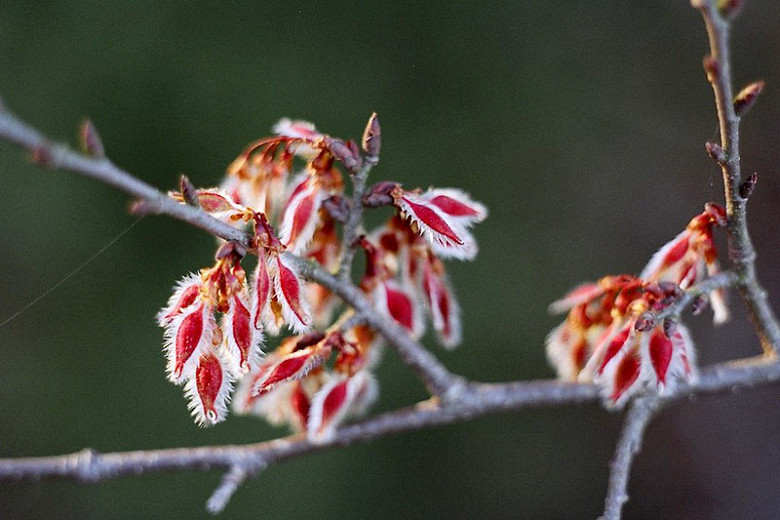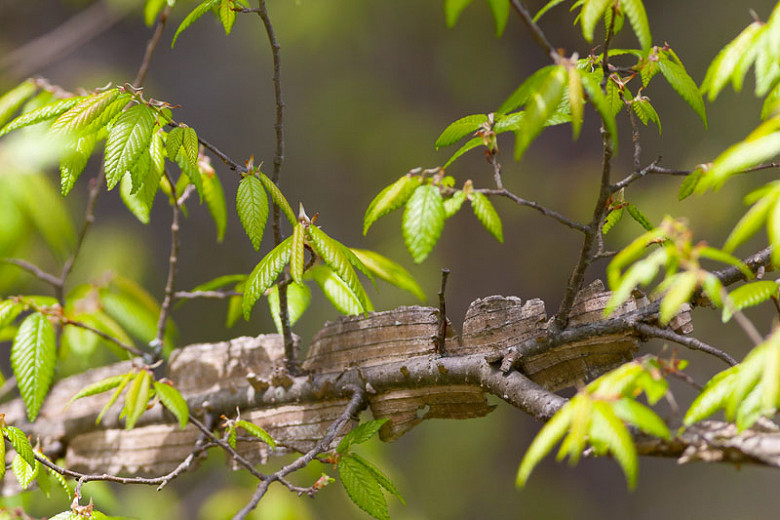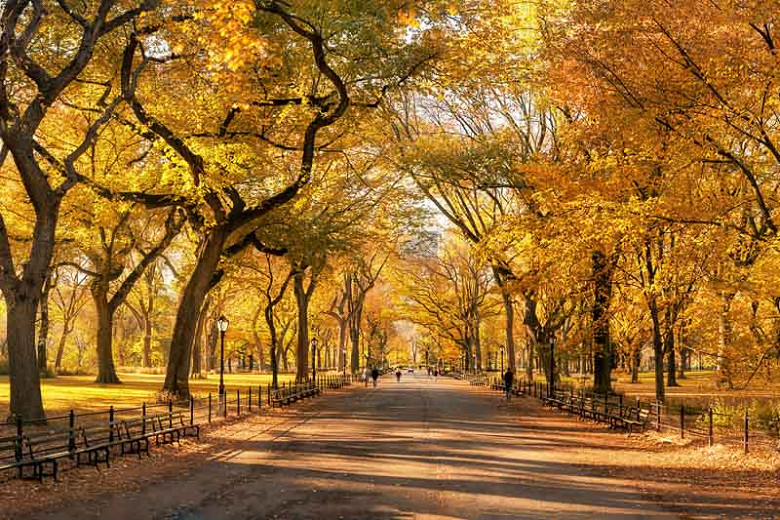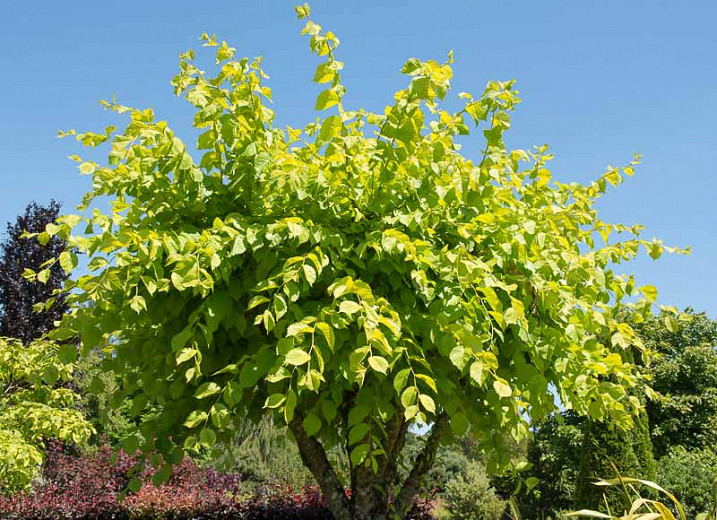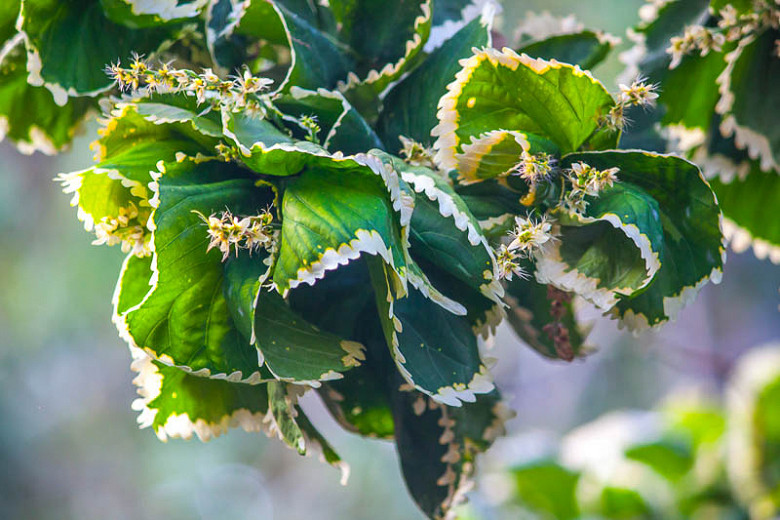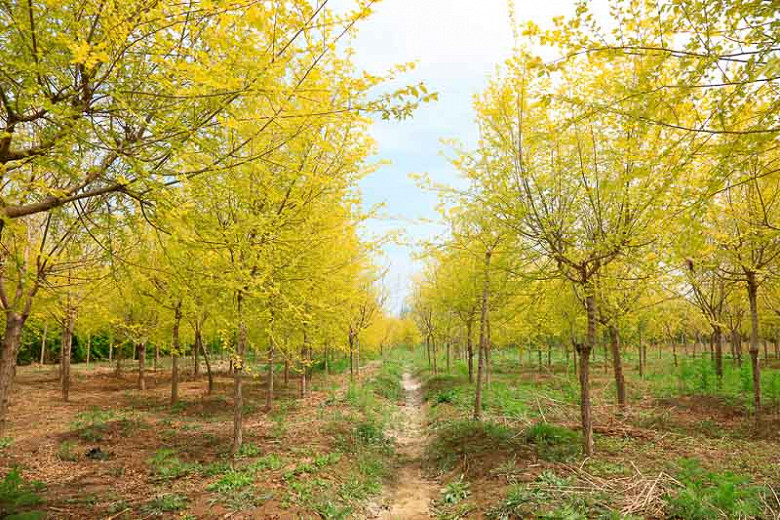Ulmus alata (Winged Elm)
Ulmus alata (Winged Elm) is a small to medium-sized deciduous tree with a relatively short trunk and an open-rounded canopy. The bark is gray-brown with flat ridges separated by irregular fissures. The alternate, ovate, doubly serrate, dark green leaves are quite small, 2.5 in. long (6 cm). The foliage turns a dull yellow in the fall. The twigs and small limbs of Winged Elm often have corky ridges extending down either side. Inconspicuous brownish-green catkins appear in spring before the leaves emerge. They give way to single-seeded, flat, disk-like, reddish brown samaras. Native to eastern and central North America, Winged Elm occurs in dry woodlands, in rocky woods, on rock outcrops, along fence rows, and in hardwood or mixed hardwood/pine forests. A fast grower, Winged Elm is occasionally planted as a shade or street tree. Like other elms, Winged Elm has some vulnerability to the Dutch Elm disease but appears more resistant than American Elm (Ulmus americana).
- Grows up to 30-50 ft. tall (9-15 m) and 20-40 ft. wide (6-12 m).
- Performs best in full sun (tolerates light shade) in rich, moist to dry, well-drained loams. Tolerant of poor soils, drought and urban conditions.
- Good as a specimen plant, landscape tree, shade tree or street tree.
- Keep an eye out for Dutch elm disease, phloem necrosis, powdery mildew, wetwood. Various wilts, rots, cankers and leaf spots may also occur
- Regular pruning of young trees is usually required in order to eliminate multiple trunks.
- Propagated by fresh, untreated seeds or softwood cuttings.
- Native to eastern and central North America.
Requirements
| Hardiness | 6 – 9 |
|---|---|
| Plant Type | Trees |
| Plant Family | Ulmus – Elms |
| Exposure | Full Sun |
| Season of Interest | Spring (Mid,Late)Summer (Early,Mid,Late)Fall |
| Height | 30' – 50' (9m – 15m) |
| Spread | 20' – 40' (6m – 12m) |
| Water Needs | Low, Average |
| Maintenance | Low |
| Soil Type | Clay, Loam, Sand |
| Soil pH | Acid, Alkaline, Neutral |
| Soil Drainage | Moist but Well-Drained, Well-Drained |
| Characteristics | Showy |
| Native Plants | United States, Midwest, Illinois, Indiana, Kansas, Missouri, Northeast, Maryland, Southeast, Alabama, Arkansas, Florida, Georgia, Kentucky, Louisiana, Mississippi, North Carolina, South Carolina, Tennessee, Virginia, Southwest, Oklahoma, Texas |
| Tolerance | Drought, Dry Soil |
| Attracts | Birds, Butterflies |
| Garden Styles | Prairie and Meadow |
